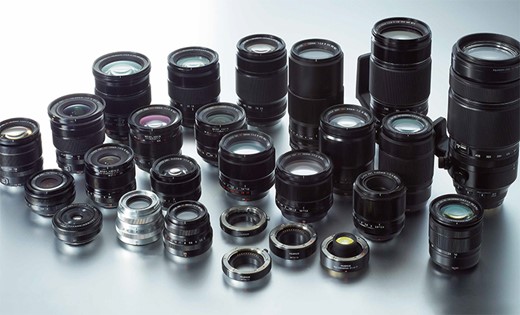The overwhelming number of mirrorless camera lenses available to the users of the micro four thirds (MFT) system is one of the many reasons why both rookie and professional photographers have adopted the system. While your standard 14-42mm kit lens is suitable enough for a number of occasions, you will eventually need to work with a variety of lenses to get the best shot for any given situation.

For every unique scenario, there will be a type of lens that’s more suited than another. The lenses discussed below should cover a wide range of situations that most photographers encounter. Each kind is best for a particular type of photography such as street photography, portrait photography, landscape photography, and so on.
Without further ado, here are the first 5 micro four thirds lenses you need to get.
A fast prime lens
A fast 25mm prime lens, which is equivalent to a standard 50mm focal length, is definitely a must-buy for any budding photographer. This fixed focal length gives you a “normal view” of the world because it closely resembles the focused view of a person.
One of the best lenses in this category that comes at an affordable price is the Panasonic Lumix G 25mm f/1.7 ASPH. It’s wide aperture allows you to take incredible pictures at amazing speeds, so it’s definitely a great entry-level lens.
If you’ve got the budget for it, another wonderful option is the Voigtlander 25mm f/0.95 lens. If you’re a big fan of bokeh, you will definitely want this lens.
A budget telephoto lens
Many photographers would agree that the Olympus M.Zuiko 40-150mm f/4.0-5.6 R is one of the most value-for-money telephoto lenses you can get. You can get one for less than $100 because they frequently go on sale, and even for much much less when you buy secondhand from reputable sellers. It’s very light and handy as well, and it produces acceptable images.
Want to be a serious telephoto photographer? You can get the Olympus 40-150mm f/2.8 Pro instead. While more expensive (and heavy), it offers a premium build and much faster maximum aperture.
A prime lens with a large aperture
The YI 42.5mm F1.8 lens might be a newcomer in the MFT world, but it offers great image quality at a very affordable price. This 85mm equivalent prime lens is extremely lightweight and is perfect for portrait photography. And if that’s not enough, it’s also macro capable.
For incredibly sharp portraits, you might want to consider the Leica DG Nocticron 42.5mm f/1.2 ASPH as well. It may cost you a couple bucks more, but it’s a worthy investment.
An ultra wide angle lens with minimal distortion
If you want to be a serious landscape photographer, you definitely have to invest in a nice wide-angle lens. The Rokinon 12mm f/2.0 NCS CS is a great entry-level option for this purpose. With a nice price tag and a decent image quality, this Samyang-produced lens is certainly a good buy. One caveat though, it’s manual focus only.
As with almost all Voigtlander lenses, the Voigtlander Nokton 10mm f0.95 is another solid, if pricey, lens that’s perfect for landscape shooters. It’s fully manual, exceptionally fast, and offers amazing bokeh.
As these lenses are meant to be part of your micro four thirds starter kit, expensive, pro lenses were only given as second options despite the fact that they definitely provide better image and build quality. No need to worry though. Panasonic, Olympus, and many other third-party lens manufacturers have created a lot of low-priced high-quality lenses to entice more users to the MFT world. With the lenses above, you definitely can produce a lot of spectacular photographs.

